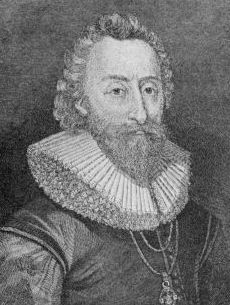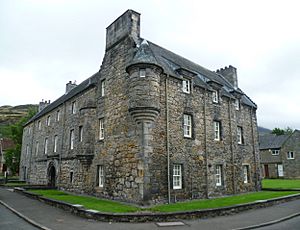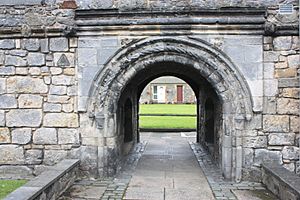Menstrie Castle facts for kids
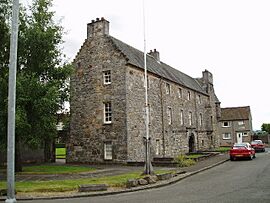 |
|
| Established | 1560 |
|---|---|
| Location | Menstrie, Scotland |
Menstrie Castle is a three-story old house in the town of Menstrie, Clackmannanshire, in central Scotland. In the early 1600s, it was the home of Sir William Alexander, 1st Earl of Stirling. He was very important in starting the colony of Nova Scotia in North America. Later, the Holborne family owned the castle. They were given a special title called Baronets of Menstrie in 1706.
The castle was fixed up in the 1900s and even won an award. Today, it has holiday apartments, private homes, and a museum. The museum used to be open a couple of days a week. Now, you can visit it by asking the Menstrie Community Council.
Contents
History of Menstrie Castle
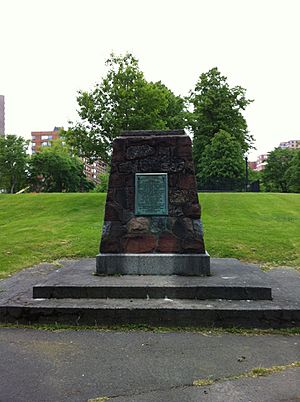
The Alexander Family and Nova Scotia
The Alexander family built Menstrie Castle around 1560. Sir William Alexander was born here in 1577. He became a famous poet and worked for King James VI of Scotland. He became a very important person in the Scottish government.
In 1621, William Alexander was made governor of Nova Scotia. This was a large area in North America, including parts of modern Canada. To get people to move there, he created a plan in 1624. He sold special titles called "baronetcies" to people who would help send colonists. However, this plan did not make much money. In 1632, Nova Scotia was given back to the French. They had claimed the area first. William Alexander, Earl of Stirling, died in London in 1644 without much money.
The Holborne Family Takes Over
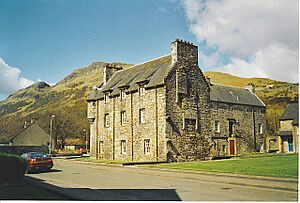
Menstrie Castle was burned by a Royalist army leader, James Graham, 1st Marquess of Montrose, in 1645. This happened during a big war in England. The castle was then sold to James Holborne of Menstrie in 1648. He was a major general in the Scottish army.
The Holborne family also owned another house nearby called Windsor House, which is now gone. A stone panel with a family motto from that house was saved. It is now part of another building in the area. The last person from the Holborne family of Menstrie, Miss Mary Anne Holborne, left money for the Menstrie church in 1882.
Later Years and Saving the Castle
In 1719, George Abercromby bought the castle. His family owned it until 1924. However, the castle started to fall apart around 1750. George's son, Ralph Abercromby, who became a famous British military hero, was born at the castle in 1734. From about 1740, the family only used the castle in the summer. They moved to another house in the winter, and the castle slowly decayed.
After the Second World War, the castle was in very bad shape. A Scottish actor named Moultrie Kelsall started a campaign to get money and protection to fix it. In 1960, the castle was officially recognized as a very important building. This meant it would be protected by law.
Restoring Menstrie Castle
In March 1957, the actor Moultrie Kelsall began working to raise money to restore the castle. The local council, Clackmannanshire County Council, fixed the building. They followed the advice of an architect named William Higgins Henry. The restoration won an award in 1962.
The building was turned into four apartments. New houses were also built in the courtyard next to it. The restoration was finished by 1964. The beautiful 16th-century entrance arch was kept during the work.
The National Trust for Scotland looks after two of the ground floor apartments. These rooms are open to the public by appointment.
Exploring the Castle Today
Menstrie Castle was first a small, L-shaped tower house. In the 1600s, it was made bigger into a U-shaped house. A wall closes off the U-shape, creating a courtyard.
Inside the castle, two rooms have an exhibition. This exhibition tells the story of Menstrie, William Alexander, and Nova Scotia. One of the rooms is decorated with the special designs, called arms, of all the Baronets of Nova Scotia. The National Trust for Scotland manages these rooms. The Menstrie Community Council also helps with access.
You can even stay overnight at Menstrie Castle! Two of the rooms have been made into self-catering accommodation.


